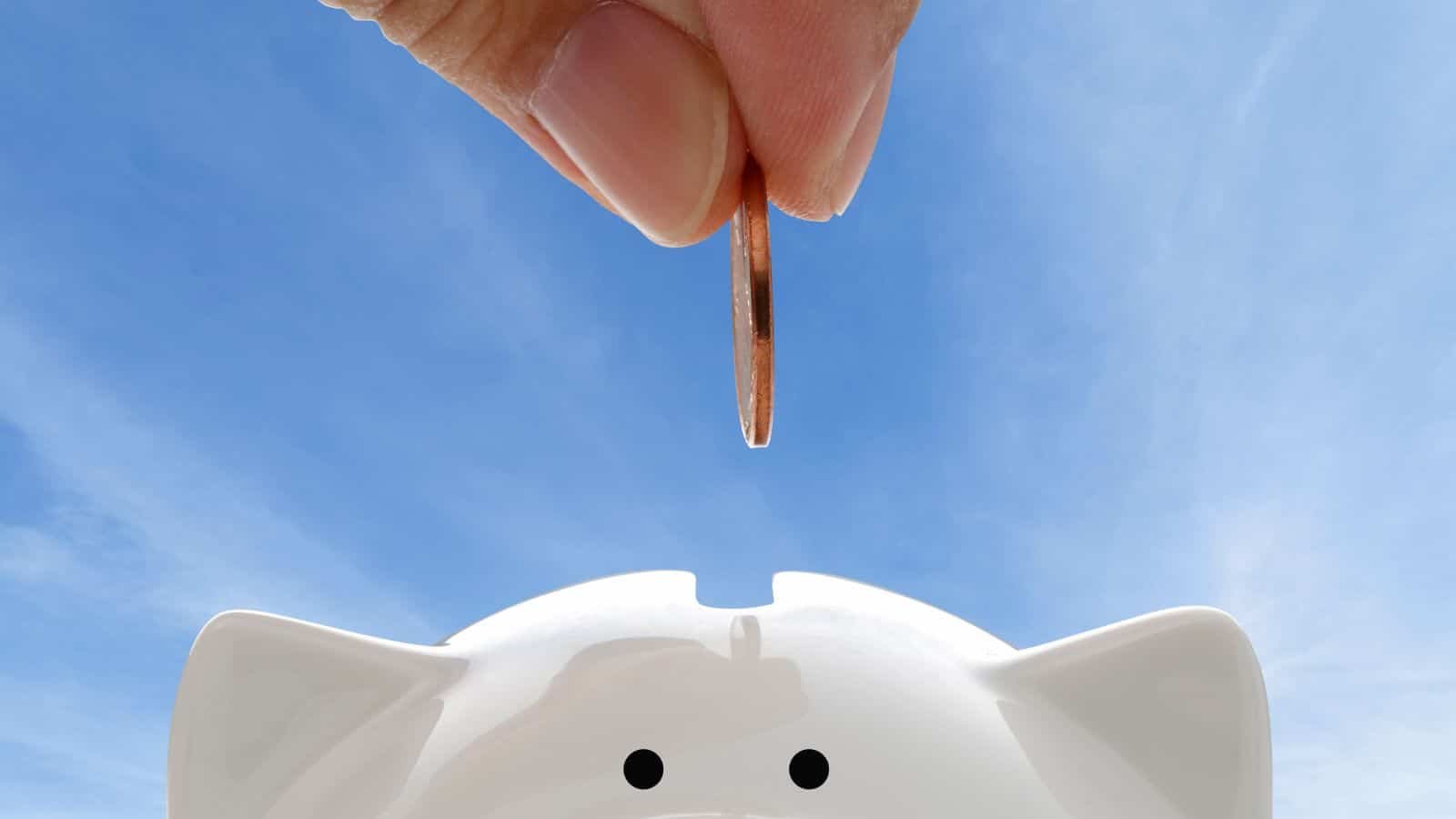The Value of Dividend Reinvestment Plans (DRIPs) in Wealth Accumulation
Do you want to increase your wealth over time? Dividend reinvestment plans (DRIPs) might be the answer. These plans are great for long-term investors. They allow you to grow your wealth by investing in dividend-paying stocks. Let’s dive into how DRIPs can help you build your wealth through dividend growth investing.
Key Takeaways:
- DRIPs enable investors to reinvest their cash dividends back into the same company’s stock.
- By reinvesting dividends, investors can take advantage of compounding returns and the power of dividend growth investing.
- DRIPs automate the investment process and can potentially offer share discounts.
- Considerations such as tax implications and the impact on diversification should be evaluated before participating in a DRIP.
- Comparing DRIPs to other investment options can help determine the best approach for individual circumstances.
Understanding Dividend Reinvestment Plans (DRIPs)
Dividend reinvestment plans (DRIPs) let shareholders use their cash dividends to buy more company shares. It’s a way to grow investments over time with compounding returns. This method works automatically (dividend reinvestment plans, DRIPs).
By joining a DRIP, investors keep earning more shares from their dividends. These new shares earn their own dividends. This cycle boosts investment growth (dividend reinvestment plans, DRIPs, automatic reinvestment).
DRIPs even allow investing in parts of shares with the dividends received. This approach helps investors to fully use their dividend money to buy shares, no matter how small (fractional shares of stock).
However, the dividends used in DRIPs are taxed like any other dividends. They follow the same tax rules as if you received the dividends in cash (cash dividends).
DRIPs let investors reinvest dividends to buy more shares, which helps in building wealth over time through compounding.
DRIPs offer a simple way for investors to grow their portfolios by reinvesting their dividends. It’s a smart strategy for long-term wealth building through continuous investment and compounding (dividend reinvestment plans, DRIPs, automatic reinvestment, cash dividends).
Example DRIP Program
Here’s an example of a DRIP program from Johnson & Johnson, a big healthcare company:
| Company | Ticker Symbol | DRIP Program |
|---|---|---|
| Johnson & Johnson | JNJ | Johnson & Johnson Direct Stock Purchase Plan (DSPP) |
Johnson & Johnson’s DRIP program lets investors reinvest dividends into more company shares. It’s called the Direct Stock Purchase Plan (DSPP). This program is a great way to increase your stake in Johnson & Johnson (DRIPs, Johnson & Johnson).
Advantages of Dividend Reinvestment Plans
Dividend reinvestment plans (DRIPs) have big advantages for those wanting to grow their wealth. By putting dividends back in, investors can see their money grow. They get more dividends in the future.
DRIPs help investors deal with ups and downs in the market. They use dollar-cost averaging, buying shares regularly. This makes investing less risky.
DRIPs make investing easy by doing everything automatically. Investors don’t have to do anything to reinvest dividends. This means they always add to their investments, catching all growth chances.
Some DRIPs offer discounts on shares. These deals can save investors money. This boosts the return they get from DRIPs.
“Dividend reinvestment plans provide a unique opportunity to compound earnings and grow wealth over time. By reinvesting dividends, investors can tap into the power of compounding returns, while also benefitting from the convenience of automatic investing and potential share discounts.”
DRIP Advantages Summary:
- Compounding Returns: Investing dividends for long-term growth.
- Dollar-Cost Averaging: Mitigating market volatility by investing regularly.
- Automatic Investing: Conveniently reinvesting dividends with minimal effort.
- Share Discounts: Potential savings on investment through DRIP programs.
Example DRIP Program
| Company | DRIP Program | Share Discounts |
|---|---|---|
| The Coca-Cola Company | Allows reinvestment of dividends to purchase additional shares. | Offers share discounts of up to 5% on reinvested dividends. |
| VF Corporation | Enables reinvestment of dividends into additional shares. | Provides a 5% discount on dividend reinvestment. |
DRIPs are a great choice for those wanting long-term growth. They help your returns grow, deal with market risk, and make investing easy. By picking the right DRIP programs and thinking about your investment goals, you can make smart choices. These choices support your financial future.
Considerations for Dividend Reinvestment Plans
Dividend reinvestment plans (DRIPs) offer great benefits for growing wealth over time. However, it’s important to think about a few things first. Looking at taxes, how diverse your investments are, and how soon you want returns can guide your choice.
Tax Implications
DRIPs can help your investments grow by keeping the ball rolling. But, there’s a catch with taxes. Even if you’re not getting cash in hand, you might still owe taxes on reinvested dividends. It’s wise to talk with a tax expert to see how DRIPs fit with your tax situation.
Diversification
DRIPs keep your money in the same company’s stock, which can be a bit risky. This approach works if you want to focus on one investment. But it’s not ideal for spreading your risk across various businesses or sectors. Make sure a DRIP makes sense for your investment plan and risk level.
Immediate Returns
If you’re looking for quick cash, DRIPs might not be your best bet. They’re all about playing the long game and building up your returns over time. Think about your financial goals and how soon you need access to your money to decide if DRIPs work for you.
Dividend reinvestment plans are a strong move for long-term growth. Yet, it’s key to ponder over their impacts on your taxes, how they fit into your broader investment strategy, and when you’ll need returns. Making the right choice requires weighing these factors carefully.
Real-World Examples of DRIPs
Procter & Gamble (P&G) shows how well dividend reinvestment plans (DRIPs) work. P&G is known as a “dividend king” because it has raised its dividends for over 50 years. This shows they really care about their shareholders and want to grow.
The DRIP at P&G lets people reinvest their dividends into more shares. This can be whole shares or parts of one. It’s great for any investor, no matter how much money they have. It makes it possible for them to build their wealth over time.
Before you jump into P&G’s DRIP, or any DRIP, look closely at the details. Understand the fees and rules. Doing your homework helps you decide if it matches your investment plans.
Pros and Cons of DRIPs
Dividend reinvestment plans (DRIPs) have lots of benefits for those looking to grow their wealth over time. Yet, it’s important to think about the downsides before jumping in.
Advantages of DRIPs
- Compounding Earnings: DRIPs let you reinvest your dividends. This means your earnings can grow faster over time.
- Dollar-Cost Averaging: With DRIPs, you buy shares regularly. This approach averages the cost and lessens the risk of market changes.
- Automation: DRIPs make investing easy by automatically reinvesting dividends. This means you can keep growing your investment without more work.
- Potential Low-Cost Investing: Some DRIPs offer shares at reduced prices. This makes investing with DRIPs more affordable.
Potential Drawbacks of DRIPs
- Limited Control Over Price and Timing: With DRIPs, you may not control when or at what price you buy shares. This might not fit all investment plans.
- Potential Limitations on Diversification: Since DRIPs reinvest in the same company, there’s a risk if that company doesn’t do well.
- Inability to Receive Cash Dividends: DRIPs reinvest dividends instead of giving you cash. This could be a downside if you need the money.
So, DRIPs offer great benefits like growth through compounding and steady investing. They make adding to your investment easy. But, it’s smart to consider how they limit control, diversification, and access to cash dividends. Think about how DRIPs match your investment goals before you decide.
Comparing DRIPs to Other Investment Options
It’s crucial to weigh dividend reinvestment plans (DRIPs) against other options to find what suits you. DRIPs can be great for growing wealth over time. But, it makes sense to look at mutual funds, exchange-traded funds (ETFs), and cash dividends too. This helps to grasp the pros and cons.
Mutual Funds and ETFs for Broader Diversification
Mutual funds and ETFs let people combine their money to invest in a mix of assets. This is different from DRIPs, which only invest in more of the same company’s stock. Mutual funds and ETFs allow for investment across various companies and areas.
This way, investors lessen their risks and might do well from the mix of investments in the fund. If any single investment does poorly, the others can help balance it out. Also, these options often come with expert management, perfect for those who prefer to invest without much personal involvement.
Cash Dividends for Immediate Income and Flexibility
Cash dividends provide an instant income and more freedom compared to DRIPs. They are profit shares paid by companies to their investors.
People needing steady income or wanting to invest elsewhere might like cash dividends more. They offer a way to handle daily costs, invest in different assets, or simply enjoy the gains of their investments.
Considerations for Decision-Making
Choosing between DRIPs, mutual funds, ETFs, or cash dividends means looking at your investment objectives. Each option has its ups and downs.
- DRIPs are great for long-term growth and consistent investing.
- Mutual funds and ETFs offer wide diversification and expert management.
- Cash dividends bring immediate income and flexibility.
Understanding your financial goals and risk comfort helps in making the right choice. Talking with a financial advisor can also be a smart move. They can tailor advice to your specific needs.

How DRIPs Impact Taxes
Understanding the tax impact of dividend reinvestment plans (DRIPs) is key. Reinvested dividends in a DRIP are taxed like cash dividends. Knowing the tax rules is important when you use a DRIP.
Most dividends in DRIPs are seen as qualified dividends. These get taxed at the lower long-term capital gains rate. Your income and filing status decide the specific tax rate.
For DRIP tax advice, consulting a tax expert is wise. They offer advice tailored to your finances and explain the tax side of DRIPs.
Tax Considerations for DRIPs
Here are key tax points for DRIP participants:
- Qualified Dividends: Dividends from DRIPs are usually qualified, meaning they might get the lower tax rate for long-term gains.
- Income and Filing Status: Your qualified dividends tax rate can change with your income and how you file. It’s vital to know which tax brackets apply to you.
- Tax Efficiency: DRIPs let you put off taxes until you sell. So, you don’t face tax on dividends until shares are sold, possibly incurring capital gains tax then.
- Tax Reporting: Always track your reinvested dividends and any shares sold from DRIP. You’ll need these records for tax reporting.
| Tax Rate | Filing Status |
|---|---|
| 0% | Married filing jointly or qualifying widow(er) with taxable income up to $80,000 |
| 15% | Married filing jointly or qualifying widow(er) with taxable income between $80,001 and $501,600 |
| 20% | Married filing jointly or qualifying widow(er) with taxable income over $501,600 |
| 0% | Single, head of household, or married filing separately with taxable income up to $40,000 |
| 15% | Single, head of household, or married filing separately with taxable income between $40,001 and $445,850 |
| 20% | Single, head of household, or married filing separately with taxable income over $445,850 |
Tax laws and rates can change, so staying updated is crucial. This helps you keep up with your tax duties.
Understanding DRIPs’ tax impact and getting professional advice helps. It allows you to meet your financial goals while using a DRIP effectively.
Conclusion
Dividend reinvestment plans, or DRIPs, are great for investors who want to build wealth over time. When you reinvest dividends, you use compounding growth and dollar-cost averaging. This boosts your returns. Yet, it’s key to think about your own investment goals before choosing this option. Talking to a financial expert can help figure out if DRIPs fit your investment plans.
DRIPs help you grow your wealth by reinvesting dividends into more stock. This uses the power of compounding growth. Plus, with dollar-cost averaging, you invest a set amount regularly which helps deal with market ups and downs. These strategies can lead to more wealth over the years.
Before jumping into DRIPs, look at what you want from your investments and how much risk you can handle. DRIPs might not work if you need cash now or want lots of different stocks. It’s also important to understand the taxes and limits of DRIPs. A financial advisor can offer advice that fits your unique needs.







